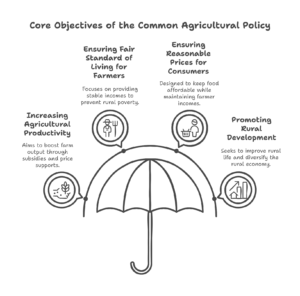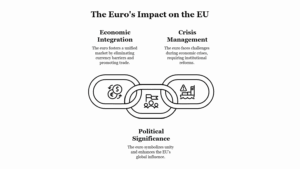environmental issues that significantly affect the health of ecosystems and the livelihoods of millions, especially in arid and semi-arid regions. Desertification refers to the degradation of land in dry areas resulting from various factors, including climatic variations and human activities. It leads to the transformation of fertile land into desert-like conditions, marked by a loss of vegetation, decline in soil fertility, and reduced agricultural productivity. Drought, on the other hand, is a prolonged period of deficient rainfall that causes water scarcity, affecting agriculture, ecosystems, and human settlements.
Causes of Desertification and Droughts:
1. Unsustainable Land Use Practices: Overgrazing by livestock, deforestation for fuelwood or agriculture, and poor irrigation methods degrade soil structure and reduce its productivity. When vegetation is stripped away and land is overworked without replenishing nutrients, it becomes increasingly vulnerable to erosion and desertification.
2. Climate Change and Variability: Changes in global and regional climate patterns have increased the frequency, duration, and intensity of droughts. Rising temperatures and erratic rainfall reduce soil moisture and cause crop failure. Reduced vegetation cover leads to a feedback loop, where barren land absorbs more heat, worsening local climate conditions.
3. Water Mismanagement and Overextraction: Inefficient irrigation, excessive withdrawal of groundwater, and diversion of rivers for industrial or urban use deplete water sources. In areas where rainfall is already limited, such practices accelerate the drying of soils and lakes, exacerbating desertification and drought vulnerability.
4. Population Pressure and Urban Expansion: Rising population leads to higher demand for agricultural land, firewood, and settlement space, resulting in deforestation and soil degradation. Urbanization also contributes to land sealing and the reduction of green cover, impacting natural water retention.
5. Industrial and Mining Activities: Mining, especially open-cast mining, and industrial pollution degrade land quality. The disposal of industrial waste and toxic effluents contaminates water bodies and soils, making the land unproductive.
Measures to Combat Desertification and Droughts:
1. Afforestation and Reforestation: Planting trees and restoring native vegetation help anchor the soil, reduce erosion, and enhance groundwater recharge. Trees also improve soil fertility by contributing organic matter and act as windbreaks to reduce the impact of dust storms.
2. Sustainable Agriculture Practices: Techniques such as crop rotation, organic farming, agroforestry, and conservation tillage help maintain soil fertility and prevent land degradation. Drip irrigation and mulching conserve water and reduce evaporation losses, making agriculture more drought-resilient.
3. Water Conservation and Harvesting: Building check dams, rainwater harvesting systems, and traditional water tanks helps replenish groundwater and ensures water availability during dry seasons. Reviving local water harvesting traditions, like johads and baolis in India, is particularly effective in arid regions.
4. Land Use Planning and Regulation: Zoning regulations and land use planning can prevent encroachment on vulnerable lands. Governments can promote policies that discourage overgrazing, restrict sand mining, and limit unregulated deforestation.
5. Community Participation and Education: Engaging local communities in conservation efforts and raising awareness about sustainable land and water use is critical. When people understand the long-term impact of land degradation, they are more likely to adopt eco-friendly practices.
6. International and National Frameworks: India is a signatory to the United Nations Convention to Combat Desertification (UNCCD) and has developed a National Action Plan to combat desertification. Initiatives like the National Afforestation Programme and Watershed Development Programme aim to restore degraded lands.
7. Use of Technology and Data: Satellite imagery, GIS mapping, and remote sensing are increasingly used to monitor desertification trends and identify vulnerable areas. These technologies enable early warning systems for droughts and support better planning.
In conclusion, desertification and droughts are both natural and anthropogenic in origin, but their impacts are significantly intensified by human activity. Combating them requires integrated efforts that combine ecological restoration, sustainable development practices, community engagement, and supportive policy frameworks. With the looming challenges of climate change, proactive and preventive measures are more urgent than ever to protect both the environment and human livelihoods.








Leave a Reply